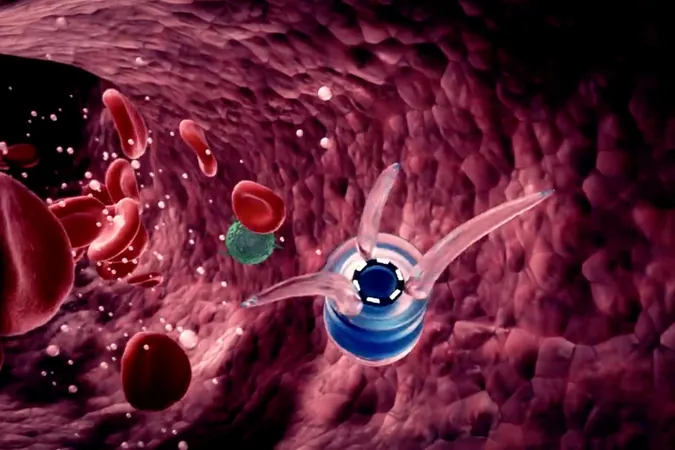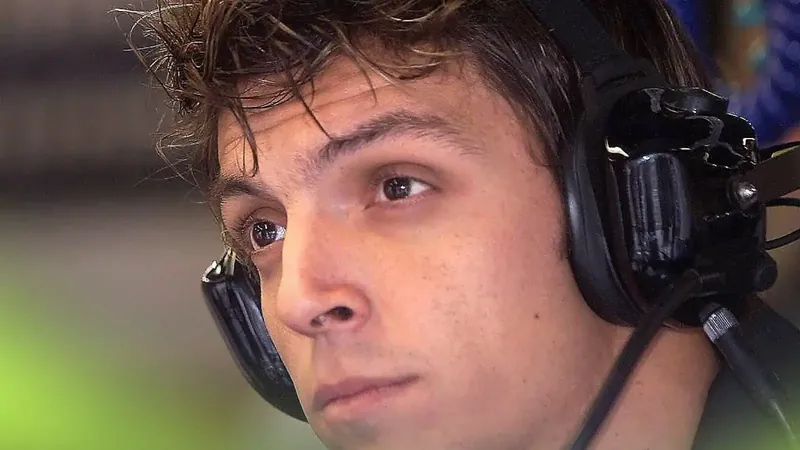
The Nanobot Fantasy: Why Dreams of Immortality May Remain Just That
2025-09-02
Author: Olivia
A Tech Dream Gone Awry
In the year 2000, Bill Joy—co-founder and chief scientist of Sun Microsystems—sounded a cautionary note about the unchecked growth of technology. His article in Wired, titled "Why the Future Doesn’t Need Us,” warned against the dangers of innovation outpacing ethical considerations, suggesting that certain technological pursuits should be limited to safeguard humanity. Fast forward to today, and similar sentiments echo across Silicon Valley, where fears about artificial intelligence threatening human existence are rampant.
The Early Hype Around Nanotechnology
Joy’s concerns were particularly rooted in nanotechnology, the manipulation of matter at the atomic scale. His insights were inspired by K. Eric Drexler’s influential work, "Engines of Creation." Drexler’s vision presented nanotech as the magic wand for a myriad of societal issues, promising miraculous cures for diseases, inexpensive energy solutions, and even the resurrection of extinct species. Today’s tech moguls share a similar enthusiasm, projecting fantasies of superintelligent AI and eternal life.
The Promise and Peril of Nanobots
Yet beneath these shimmering promises lay dark shadows. Drexler's ideas included scenarios where self-replicating nanobots could spiral out of control, leading to a hypothetical grey goo apocalypse—where the planet is dismantled atom by atom. Joy’s fears of runaway technology—a common caution today—sounded alarm bells, but where are the nanobots now?
Reality Check: The Nanotech Illusion
In reality, nanotechnology as envisioned remains largely unrealized. No miraculous cures or mind-uploading has come to fruition, yet the catastrophic grey goo scenario has yet to materialize either. Drexler’s grand vision often appears more like a philosophical fantasy than feasible science—a modern philosopher's stone incorrectible by the laws of chemistry.
From Utopian Dreams to Scientific Grounding
The discourse of oneiric technologies—solutions born more from dreams than scientific feasibility—is prevalent in the tech industry. Concepts like terraforming planets or cryogenic freezing of brains have stirred imaginations but lack any robust support in current scientific practices. Silicon Valley’s obsession with lofty utopias can overshadow pressing global challenges, like climate change or equity.
The Role of Critique in Tech Progress
Critics like scientists Julius Rebek and Richard Smalley have dismissed such grand designs as little more than show business, arguing that the blurry boundary between hopeful science and outright fantasy often leads to misguided priorities. Despite some advances in nanotechnology applications, such as quantum dots and synthetic molecular machines, Drexler’s dream remains dormant and largely unpursued.
Navigating the Future With Caution
As we look toward a future heavily influenced by AI and potential new technologies, we find ourselves at a crossroads. The promises of tech barons like Elon Musk and Jeff Bezos—whether it’s mind-uploading or interstellar colonization—can lead us to neglect the urgent socio-political issues of our time. Joy’s early misgivings serve as a poignant reminder to remain grounded and critically engage with technological aspirations rather than blindly chasing fantastical visions, inviting us to consider not just the dreams of immortality, but also the realities of responsible innovation.









 Brasil (PT)
Brasil (PT)
 Canada (EN)
Canada (EN)
 Chile (ES)
Chile (ES)
 Česko (CS)
Česko (CS)
 대한민국 (KO)
대한민국 (KO)
 España (ES)
España (ES)
 France (FR)
France (FR)
 Hong Kong (EN)
Hong Kong (EN)
 Italia (IT)
Italia (IT)
 日本 (JA)
日本 (JA)
 Magyarország (HU)
Magyarország (HU)
 Norge (NO)
Norge (NO)
 Polska (PL)
Polska (PL)
 Schweiz (DE)
Schweiz (DE)
 Singapore (EN)
Singapore (EN)
 Sverige (SV)
Sverige (SV)
 Suomi (FI)
Suomi (FI)
 Türkiye (TR)
Türkiye (TR)
 الإمارات العربية المتحدة (AR)
الإمارات العربية المتحدة (AR)